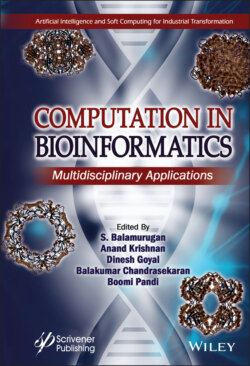Читать книгу Computation in BioInformatics - Группа авторов - Страница 18
1.2.4 Virtual Screening
ОглавлениеVirtual screening is an in silico method used in drug designing. They are involved in identifying active compounds using chemical databases. It helps in identifying the structure of those compounds that may act as lead compounds with maximum affinity for a drug target [30]. The drug target may be a protein or enzyme. Virtual screening approaches are mainly of two types: structure-based and ligand-based. In structure-based virtual screening, molecular docking studies help in screening of target protein against ligands/compounds that are present in chemical libraries. The process of docking is usually based on the functional scores and binding strength of the compound with its target. Virtual screening uses computational programs to evaluate huge libraries of compounds automatically [31]. It is an accurate method allowing the researches to obtain an authenticated structure which might be useful as a drug after further validations. Because of this, virtual screening is necessary and has become an important part of drug discovery process [18].
MTiOpenScreen: This approach involves docking of small molecules and virtual screening. The screening can be done in one run which can be up to 5,000 small molecules in different databases. The run can also be up to 10,000 molecules selected among 15,000 compounds that are prepared to be docked which is provided at MTiOpenScreen. The web server can be obtained from http://bioserv.rpbs.univ-parisdiderot.fr/services/MTiOpenScreen/.
ICM-VLS: ICM Virtual Ligand Screening (VLS) is a combination of internal coordinate docking methodology with a sophisticated global optimization scheme. Its accuracy and fast potentials have led to an efficient virtual screening methodology in which ligands are fully and continuously flexible. It can be accessed at http://www.molsoft.com/vls.html.
